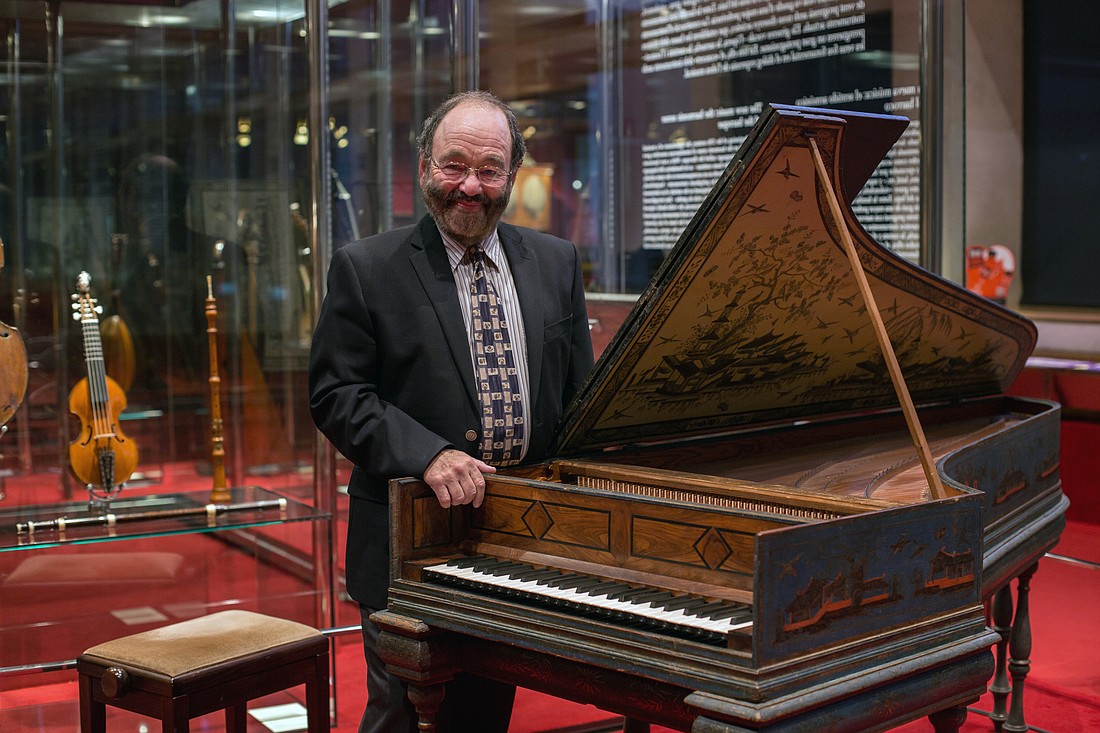- November 23, 2024
-
-
Loading

Loading

Ah, the harpsichord. Forever in the shadow of its younger brother, the piano. And forever stuck with an old-timey association. When screenwriters want to create a dated feel, they’ll have someone playing the harpsichord. Lurch on “The Addams Family,” and Trelane on the original “Star Trek” are only two examples. Despite this patina of age, the harpsichord is alive and well. In the hands of the right living musician, it still plays beautifully. With Mark Kroll, it’s definitely in the right hands.
Kroll will be playing at the upcoming “Harpsichord Masterpieces from France and Spain” concert at Faith Lutheran Church. He’s one of the world’s most celebrated harpsichordists and fortepianists. But he didn’t start out that way.
Kroll trained as a pianist—and first started playing when he was 7 years old. He dreamed of being the next Vladimir Horowitz. But at the age of 17, his dreams changed.
“That’s when I discovered the harpsichord,” he says. “I thought ‘This is for me!’ I loved the instrument and I loved the music, it’s as simple as that. I made the switch and I never looked back.”
Kroll fell in love with the harpsichord’s expressive power. That may sound surprising, if you’ve never heard him play. To Kroll, the instrument’s tinny reputation is undeserved. He adds that it’s not an old-fashioned piano, either. Despite their external similarities, the harpsichord and piano are different animals.
“It’s what’s inside that counts,” he says.
Superficially, the instruments have a family resemblance. A piano has a keyboard; a harpsichord has two. They’re both keyboard instruments, but they work in different ways.
“The piano creates a sound by hitting a string with a felt-covered hammer,” Kroll says. “The harpsichord makes its sound by plucking a string.”
That’s a qualitative difference.
“With a piano, you create expression on the notes. Each note is loud or soft, depending on how hard you strike the key. A harpsichord has a fixed volume — there’s no loud or soft. So, a harpsichordist creates expression using subtle variations in the intervals between the notes.”
In other words, the musical medium is the message. The harpsichord has its own character. That character informed the composers who wrote for it.
“Today, we’re often more familiar with piano transcriptions, but something’s always lost in translation,” he says.
What about the composers featured in the concert? Both wrote with the harpsichord in mind. Kroll discusses them like he’s talking about old friends.
“Domenico Scarlatti and François Couperin were two of the greatest composers for the harpsichord who ever lived,” he says. “That’s not merely my opinion — it was the prevailing opinion when they were alive.”
Kroll adds that both composers had their own unique character.
“Couperin was flamboyant—and he wasn’t humble,” he says. “During his lifetime, he signed his work ‘François Couperin le Grand.’”
That was partly his way of distinguishing himself from his father, Kroll says. “I think it was also a boast,” he adds. “But Couperin’s sense of self-importance never eclipsed his sense of fun. He gave very colorful titles to his pieces, like ‘Cupid’s Darts,’ or ‘The Voluptuous One.’”
Kroll adds that Scarlatti wrote 550 sonatas for the harpsichord. “His music had a real fire,” he says. “He was Italian, but he spent most of his life in Spain. You can hear wonderful echoes of flamenco and other Spanish dances and Spanish church music throughout his work.”
So, both composers were quite different.
“Each created a colorful sound on the harpsichord in their own unique way. It just goes to show how versatile the instrument is. That’s what I really love about it.”
Kroll sees himself as a proud harpsichord ambassador, and Faith Lutheran Church is the ideal setting for his diplomacy.
“A pianist can play in Carnegie Hall and still be appreciated,” he says. “The harpsichord doesn’t work that way. If a harpsichordist tries to play in a big auditorium, don’t bother going. But this church is an intimate space — about 100 square feet. Listeners can really hear the character of the instrument ... the way the composers intended.”